![]()
Tao Te Ching: "Doorway of the Mysterious Female ... is there within us all the while"
"The reader will notice in the many passages where Lao-tzu describes the Master, I have used the pronoun 'she' at least as often as 'he.' The Chinese language doesn't make this kind of distinction; in English we have to choose. But since we are all, potentially, the Master (since the Master is, essentially, us) I felt it would be untrue to present a male archetype, as other versions have, ironically, done. Ironically, because of all the great world religions the teaching of Lao-tzu is by far the most female.”- Stephen Mitchell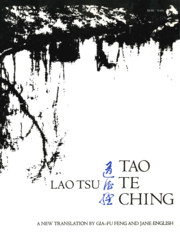
The Feminine Tao
Introduction
The "Tao Te Ching" (pronounced Dao De Jing), literally, "The Book of
the Way and its Virtue," is one of the major source texts in Chinese
Taoism. It was probably compiled in the 6th-5th c. B.C.E., as a
collection of teachings, for the most part passed down from a much
older, oral tradition. The name of its faithfully nameless author,
Lao-tzu (pronounced "Laozi"), means simply "old master.” According to
Ellen M. Chen's translation, "of all the ancient classics still
extant, the Tao Te Ching alone draws its inspiration from the female
principle.” Its profound inclusion of the feminine divine is in fact
essential to its core teaching. As Karyn Lai points out in an
introduction to the TTC's environmental philosophy: its basic
tenor "Is that a more complete life for all forms of existence can be
achieved only through a full appreciation of the connectedness of all
beings.”
This spirit of diversity as a wellspring of spirituality, may be
aided and abetted, in any study of the Tao Te Ching, by utilizing as
many different translations as is comfortable. Allowing these
translations to inform each other is a good way to catch on to the
various spiritual implications and unworded images, suggested but not
spelled out in the ancient Chinese text.
In her essay, "Daode Jing in Practice," Eva Wong comments: "In the
Daoist tradition, study and practice are inseparable: to study is to
practice and to practice is to study. Understanding a text can help
us practice its teachings; practicing its teachings can help us
understand its meanings.”
The Feminine Tao
www.earlywomenmasters.net/tao/index.html
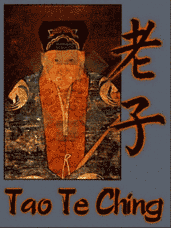
The Tao of Laozi (Lao Tzi)
Journal of Humanistic Psychology, Vol. 43 No. 1, Winter 2003
'Tao' is a Chinese word meaning 'way', 'way of Heaven', 'Path' or 'road' or 'method'. It indicates a line or principle of conduct. There is no proper English term for 'Tao'. It means the 'Eternal Being'.
The Founder of Taoism was Lao-Tze. Lao-Tze was born in 604 B.C. in the village of Chu-Jhren, in Li country, belonging to the Ku province of the State Chu. He was born under the plum tree (in Chinese 'Li'). He adopted it as his surname. The hair of the head was white when he was born. Hence he was called Lao-Tze (old boy) or philosopher, one who is child-like even when old.
He was popularly called Lao-Tze. His name was Er (ear). He was called Tan after his death. 'Tan' means 'long lobe'. He had peculiar long ears. His appellation was 'Po Yang' or"count of positive principle.” He was a keeper or recorder of the secret Archives in the Royal court of Chore. He was a State Historian.
Lao-Tze says: Tao is one. It was in the beginning. It will remain for ever. It is impersonal, eternal, immutable, omnipresent, bodiless, immaterial. It cannot be perceived by the senses. It is nameless. It is indescribable.
It is the first cause from which all substances take their origin and all phenomena flow. The great Tao is all-pervading. All things depend on it for life. It is The Mother of all phenomena, of heaven and earth. It existed before the Personal God. It is the father of God. It is the producer of God. It is the originator of heaven and earth. It is The Mother of all things.
You will find that there is an aroma of Indian Vedantic philosophy in the teachings of Lao-Tze.
Tao is everywhere. It is in the ant. It is in the grass. It is in the earthen-ware vessel. It is in excrement. It is in the highest place but is not high. It is in the, lowest place, but is not low. It is in ancient times, but itself is not ancient. It is in old age but itself is not old. It is everywhere, but appears to be nowhere.
Tao is the sanctuary where all things find refuge. It is the good man's priceless treasure. It is the guardian and saviour of him who is not good. (Sri Swami Sivananda)
Laozi believed that females are The Mothers of all things and all human beings. In accordance with Dao, which generates everything, females are those that produce all things. Without females or mothers, there is nothing else in the world.
The mystery of the valley is immortal;
It is known as the Subtle Female.
The gateway of the Subtle Female
Is the source of the Heaven and Earth. (Chapter 6)
In another chapter, Laozi observed:
The beginning of the world
May be regarded as The Mother of the world.
To apprehend The Mother,
Know the offspring.
To know the offspring
Is to remain close to The Mother,
And free from harm throughout life. (Chapter 52)
As per Daoist humanism, females, instead of males, are usually highly regarded in his writing:
Know the male
Hold to the female;
Become the world's stream.
By being the world's stream
The Permanent De (or humanism) will never leave.
This is returning to Infancy. (Chapter 28)
From this perspective, it is easy to see that femininity and mothering were highly valued by Laozi. Simply speaking, nothing in the world is as important as women and mothers. If many philosophical and religious ideas tend to maintain male superiority or dominance, directly or indirectly (e.g., Confucianism; Hinduism; Christianity, including Mormonism; Islam; Chauvinism; or Freudianism), Daoism differs because females play a more important role in humanism than males. This point may not have been well understood in modern feminist research (see Laughlin & Wong, 1999). Perhaps philosophically or religiously, Laozi could be seen as one of the first proponents of feminism in human history.
Journal of Humanistic Psychology, Vol. 43 No. 1,
Winter 2003 64-85
"The reader will notice in the many passages where Lao-tzu describes the Master, I have used the pronoun 'she' at least as often as 'he.' The Chinese language doesn't make this kind of distinction; in English we have to choose. But since we are all, potentially, the Master (since the Master is, essentially, us) I felt it would be untrue to present a male archetype, as other versions have, ironically, done. Ironically, because of all the great world religions the teaching of Lao-tzu is by far the most female.”
From the introduction to the translation
by Stephen Mitchell

Gu Shen Bu Si,
Shi Wei Xuan Pin.
Xuan Pin Zhi Men,
Shi Wei Tian Di Gen.
Mian Mian Ruo Cun,
Yong Zhi Bu Qin.
"The Valley Spirit never dies.
It is named the Mysterious Female.
And the Doorway of the Mysterious Female
is the base from which Heaven and Earth sprang.
It is there within us all the while;
Draw upon it as you will, it never runs dry.”
Tao Te Ching 6
(World Scripture, International Religious Foundation, Paragon House Publishing, 1995 p. 95.)
The Spirit in the Void never dies.
It is called The Mother-Deep.
The opening of The Mother-Deep is called the Root of Heaven and Earth. (*)
Ceaselessly, ceaselessly,
It nourishes and preserves:
Inexhaustible, without effort.
Tao Te Ching: Chapter 6
translated by Shrine of Wisdom (1924)
(*) SHRINE OF WISDOM says:
"The Mother is Tao 'conceived as having a name,' therefore She is the Root of Yang and Yin. Between the highest Heaven and the nethermost Earth is the fathomless Void where the forms of existence emerge from the opening of The Mother-Deep.”
"The Valley Spirit never dies
It is named the Mysterious Female.
And the doorway of the Mysterious Female
Is the base from which Heaven and Earth sprang.
It is there within us all the while.
Draw upon it as you will, it never runs dry.”
Tao Te Ching, Chapter VI,
Translated by Arthur Waley
The valley spirit never dies.
It is the unknown first mother,
whose gate is the root
from which grew heaven and earth.
It is dimly seen, yet always present.
Draw from it all you wish;
it will never run dry.
Tao Te Ching: Chapter 6
translated by Tolbert McCarroll
The spirit of the valley never dies;
This is called the dark female.
The entry into the dark female
Is called the root of heaven and earth.
Tenuous, it seems as if it were there,
Yet use will never exhaust it.
Tao Te Ching: Chapter 6
translation by D. C. Lau & Sarah Allan (Ma Wang Tui Manuscripts)
The Spirit of the Valley dies not,
it is called Mother-substance of the Deep.
The Door of Mother-substance of the Deep
is called the Root of Heaven and Earth.
Continuously, continuously,
It nourishes and preserves.
Use it,
Thy strength shall not fail.
Tao Te Ching: Chapter 6
translation by Isabella Mears (1922)
"The valley spirit never dies
Call it the mystery, the woman.
The mystery,
the Door of the Woman,
is the root
of earth and heaven.
Forever this endures, forever.
And all its uses are easy.”
Chapter 6, Tao Te Ching
Translated by Ursula K. Le Guin
"The Tao is called the Great Mother
empty yet inexhaustible,
it gives birth to infinite worlds.
It is always present within you.
You can use it any way you want.”
Translated by Stephen Mitchell, Chapter 6
"The life-force of the valley never dies—
This is called the dark female.
The gateway of the dark female—
This is called the root of the world.
Wispy and delicate, it only seems to be there,
Yet its productivity is bottomless.”
Dao De Jing, #6,
Translated by Roger T. Ames and David L. Hall
"The spirit of emptiness is immortal.
It is called the Great Mother
because it gives birth to Heaven and Earth.
It is like a vapor,
barely seen but always present.
Use it effortlessly.”
Tao Te Ching, Chapter 6,
Translated by J. H. McDonald
The valley spirit never dies
Call it the mystery, the woman.
The mystery,
the Door of the Woman,
is the root
of earth and heaven.
Forever this endures, forever.
And all its uses are easy.
Tao Te Ching: Chapter 6
translated by Ursula K. Le Guin
The valley spirit never dies;
It is the woman, primal mother.
Her gateway is the root of heaven and Earth.
It is like a veil barely seen.
Use it; it will never fail.
Tao Te Ching: Chapter 6
translated by Gia-Fu Feng & Jane English
The spirit of the valley never dies.
It is called the mystical female.
The door of the mystical female is the root of heaven and earth.
It seems to be continuously within us.
Use it, and it will never fail.
Tao Te Ching: Chapter 6
translated by Beck
The valley spirit is not dead;
They say it is the mystic female.
Her gateway is, they further say,
The base of heaven and earth.
Constantly, and so forever,
Use her without labour.
Tao Te Ching: Chapter 6
translated by Blackney
The breath of life moves through a deathless valley
Of mysterious motherhood
Which conceives and bears the universal seed,
The seeming of a world never to end,
Breath for men to draw from as they will:
And the more they take of it, the more remains.
Tao Te Ching: Chapter 6
translated by Bynner
The spirit of emptiness is immortal.
It is called the Great Mother
because it gives birth to Heaven and Earth.
It is like a vapour, barely seen but always present.
Use it effortlessly.
Tao Te Ching: Chapter 6
translated by Byrn
The spirit of the valley never dies.
It is called the subtle and profound female.
The gate of the subtle and profound female
Is the root of Heaven and Earth.
It is continuous, and seems to be always existing.
Use it and you will never wear it out.
Tao Te Ching: Chapter 6
translated by Chan
The valley spirit not dying
is called the mysterious female.
The opening of the mysterious female
is called the root of heaven and earth.
Continuous, on the brink of existence,
to put in into practice, don't try to force it.
Tao Te Ching: Chapter 6
translated by Cleary
The De is the immortal energy of the Dao,
its feminine aspect.
Its operation
is of pure Joy and Love, and fails never.
Heaven and Earth issued from her Gate;
this Gate is the root of their World-Sycamore.
Tao Te Ching: Chapter 6
translated by Crowley
The Valley energy never dies.
This is called 'fathomless female'
The channel of the fathomless female:
This is called the basis of the cosmos.
Silken! it's as if it abides.
Handle it gently.
Tao Te Ching: Chapter 6
translated by Hansen
"The Valley Spirit is undying.”
This is mysterious Femininity.
The Abode of mysterious Femininity:
This is the Root of Heaven and Earth.
It seems to endure on and on.
One who uses It never wears out.
Tao Te Ching: Chapter 6
translated by LaFargue
The valley spirit dies not, aye the same;
The female mystery thus do we name.
Its gate, from which at first they issued forth,
Is called the root from which grew heaven and earth.
Long and unbroken does its power remain,
Used gently, and without the touch of pain.
Tao Te Ching: Chapter 6
translated by Legge
The valley spirit has no death
It is appropriately called the all-embracing female
The gateway of The all-embracing female
Is appropriately called the root of heavens and earth.
Continuous, soft, it looks like it exists —
It is infrequently used.
Tao Te Ching: Chapter 6
translated by Lindauer
The Spirit of the Valley never dies.
It is called the Mystic Female.
The Door of the Mystic Female
Is the root of Heaven and Earth.
Continuously, continuously, It seems to remain.
Draw upon it And it serves you with ease.
Tao Te Ching: Chapter 6
translated by Lin Yutan
The spirit of emptiness is eternal.
It is called"The Mysterious Woman.”
Her womb is called"The Source of Heaven and Earth.”
Dimly seen, yet eternally present
It is always there for you to use.
it's easy!
Tao Te Ching: Chapter 6
translated by Mabry
The valley spirit never dies.
it's named the mystic woman.
And the gate of the profound woman
is the root that heaven and earth sprang from.
it's there within us all the while;
draw upon it as you will, you can never wear it out.
Tao Te Ching: Chapter 6
translated by McDonald
The Tao is called the Great Mother:
empty yet inexhaustible, it gives birth to infinite worlds.
The Tao is called the Great Mother:
empty yet inexhaustible, it gives birth to infinite worlds.
It is always present within you.
You can use it any way you want.
Tao Te Ching: Chapter 6
translated by Mitchell
The valley spirit never dies. It is called"The mysterious female.”
The opening of the mysterious female Is called"The root of Heaven and Earth.”
The valley spirit never dies. It is called"The mysterious female.”
The opening of the mysterious female
Is called"The root of Heaven and Earth.”
Continuous, seeming to remain. Use it without exertion.
Tao Te Ching: Chapter 6
translated by Muller
Valley and the Spirit never die.' They form what is called the Mystic Mother,.
From whose gate comes the origin of heaven and earth.
'The Valley and the Spirit never die.' They form what is called the Mystic Mother,
From whose gate comes the origin of heaven and earth.
This (the origin) seems ever to endure.
In use it can never be exhausted.
Tao Te Ching: Chapter 6
translated by Ta-Kao
The heart of Tao is immortal, the mysterious fertile mother of us all,
of heaven and earth,
of every thing and not-thing.
Invisible yet ever present,
you can use it forever without using it up.
Tao Te Ching: Chapter 6
translated by Walker
The expansive transcendent power which resides in the median space, the virtue of the Principle, does not die.
It is always the same and acts the same, without diminution or cessation.
This virtue is the mysterious mother of all beings.
The doorway of this mysterious mother is the root of heaven and earth, the Principle.
Sprouting forth, she does not expend herself; acting, she does not tire herself.
Tao Te Ching: Chapter 6
translated by Wieger
The Spirit of the Fountain dies not.
It is called the Mysterious Feminine.
The doorway of the Mysterious Feminine
Is called Root of Heaven-and-Earth.
Lingering like gossamer, it has only a hint of existence;
And yet when you draw upon it, it is inexhaustible.
Tao Te Ching: Chapter 6
translated by Wu

The Tao of Laozi (Lao Tzi)
Journal of Humanistic Psychology, Vol. 43 No. 1, Winter 2003
'Tao' is a Chinese word meaning 'way', 'way of Heaven', 'Path'
or 'road' or 'method'. It indicates a line or principle of conduct.
There is no proper English term for 'Tao'. It means the 'Eternal
Being'.
The Founder of Taoism was Lao-Tze. Lao-Tze was born in 604 B.C. in
the village of Chu-Jhren, in Li country, belonging to the Ku province
of the State Chu. He was born under the plum tree (in Chinese 'Li').
He adopted it as his surname. The hair of the head was white when he
was born. Hence he was called Lao-Tze (old boy) or philosopher, one
who is child-like even when old.
He was popularly called Lao-Tze. His name was Er (ear). He was called
Tan after his death. 'Tan' means 'long lobe'. He had peculiar long
ears. His appellation was 'Po Yang' or 'count of positive principle'.
He was a keeper or recorder of the secret Archives in the Royal court
of Chore. He was a State Historian.
Lao-Tze says: Tao is one. It was in the beginning. It will remain for
ever. It is impersonal, eternal, immutable, omnipresent, bodiless,
immaterial. It cannot be perceived by the senses. It is nameless. It
is indescribable.
It is the first cause from which all substances take their origin and
all phenomena flow. The great Tao is all-pervading. All things depend
on it for life. It is the mother of all phenomena, of heaven and
earth. It existed before the Personal God. It is the father of God.
It is the producer of God. It is the originator of heaven and earth.
It is the mother of all things.
You will find that there is an aroma of Indian Vedantic philosophy in
the teachings of Lao-Tze.
Tao is everywhere. It is in the ant. It is in the grass. It is in the
earthen-ware vessel. It is in excrement. It is in the highest place
but is not high. It is in the, lowest place, but is not low. It is in
ancient times, but itself is not ancient. It is in old age but itself
is not old. It is everywhere, but appears to be nowhere.
Tao is the sanctuary where all things find refuge. It is the good
man's priceless treasure. It is the guardian and saviour of him who
is not good. (Sri Swami Sivananda)
Laozi believed that females are the mothers of all things and all
human beings. In accordance with Dao, which generates everything,
females are those that produce all things. Without females or
mothers, there is nothing else in the world.
The mystery of the valley is immortal;
It is known as the Subtle Female.
The gateway of the Subtle Female
Is the source of the Heaven and Earth. (Chapter 6)
In another chapter, Laozi observed:
The beginning of the world
May be regarded as the Mother of the world.
To apprehend the Mother,
Know the offspring.
To know the offspring
Is to remain close to the mother,
And free from harm throughout life. (Chapter 52)
As per Daoist humanism, females, instead of males, are usually highly
regarded in his writing:
Know the male
Hold to the female;
Become the world's stream.
By being the world's stream
The Permanent De (or humanism) will never leave.
This is returning to Infancy. (Chapter 28)
From this perspective, it is easy to see that femininity and
mothering were highly valued by Laozi. Simply speaking, nothing in
the world is as important as women and mothers. If many philosophical
and religious ideas tend to maintain male superiority or dominance,
directly or indirectly (e.g., Confucianism; Hinduism; Christianity,
including Mormonism; Islam; Chauvinism; or Freudianism), Daoism
differs because females play a more important role in humanism than
males. This point may not have been well understood in modern
feminist research (see Laughlin & Wong, 1999). Perhaps philosophically
or religiously, Laozi could be seen as one of the first proponents of
feminism in human history.
Journal of Humanistic Psychology, Vol. 43 No. 1, Winter 2003 64-85
The "Tao Te Ching," "The Book of the Way and its Virtue," is one of the major source texts in Chinese Taoism. It contains 81 short poems or "chapters," and was probably compiled in the 6th-5th c. B.C.E., as a collection of sayings passed down from a much older, oral tradition. The name of its anonymous auther, Lao-tzu, means simply "old master.” According to the commentator Ellen M. Chen, "of all the ancient classics still extant, the Tao Te Ching alone draws its inspiration from the female principle.”
"The reader will notice in the many passages where Lao-tzu describes the master, I have used the pronoun 'she' at least as often as 'he.' The Chinese language doesn't make this kind of distinction; in English we have to choose. But since we are all, potentially, the Master (since the Master is, essentially, us) I felt it would be untrue to present a male archetype, as other versions have, ironically, done. Ironically, because of all the great world religions the teaching of Lao-tzu is by far the most female. Of course you should feel free, throughout the book, to substitute 'he' for 'she' or vice versa.”
From the introduction to the translation
by Stephen Mitchell
"Tao as the Great Mother and the Influence of Motherly Love in the Shaping of Chinese Philosophy
One important aspect of thought in the Tao Te Ching, the significance of which has been so far neglected, is its emphasis on the feminine. Of all ancient Chinese classics, the Tao Te Ching stands alone in explicitly speaking of Tao as the Mother of the World (25): It is the dark female animal (6); to reach union with Tao man need to abide by the female (28); the female animal overcomes the male animal by its stillness (61).”
Ellen Marie Chen, History of Religions, Vol. 14, No. 1 (Aug., 1974), pp. 51-64
Tao Te Ching (the Classic of the Way and its Power), according to tradition written by Lao-Tzu.
Key concepts: the Tao, introduced in the Tao Te Ching is as follows:
"The Tao that can be expressed is not the eternal Tao; the name that can be defined is not the unchanging name...There is a thing inherent and natural, which existed before heaven and earth. Motionless and fathomless, it stands alone and never changes; it pervades everywhere and never becomes exhausted; it may be regarded as the Mother of the Universe. I do not know its name. If I am forced to give it a name, I call it Tao, and I name it supreme... Man follows the laws of earth; earth follows the laws of heaven; heaven follows the laws of the Tao; and Tao follows the laws of its intrinsic nature.”
What is this Tao? The concept transcends the powers of reason and must be grasped intuitively, it is beyond words, beyond all differences and distinction, it is the unchanging, permanent reality of constant change, it is the ground of being and nonbeing, it is akin to the Hindu concept of the Brahman.

Tao Te Ching - first page
Tao: The Great Mother
The tao that can be told
is not the eternal Tao.
The name that can be named
is not the eternal Name.
The unnamable is the eternally real.
Naming is the origin
of all particular things.
Free from desire, you realize the mystery.
Caught in desire, you see only the manifestations.
Yet mystery and manifestations
arise from the same source.
This source is called darkness.
Darkness within darkness.
The gateway to all understanding.
Tao Teh Ching 1
When people see some things as beautiful,
other things become ugly.
When people see some things as good,
other things become bad.
Being and non-being create each other.
Difficult and easy support each other.
Long and short define each other.
High and low depend on each other.
Before and after follow each other.
Therefore the Master
acts without doing anything
and teaches without saying anything.
Things arise and she lets them come;
things disappear and she lets them go.
She has but doesn't possess,
acts but doesn't expect.
When her work is done, she forgets it.
That is why it lasts forever.
Tao Teh Ching 2
If you overesteem great men,
people become powerless.
If you overvalue possessions,
people begin to steal.
The Master leads
by emptying people's minds
and filling their cores,
by weakening their ambition
and toughening their resolve.
He helps people lose everything
they know, everything they desire,
and creates confusion
in those who think that they know.
Practice not-doing,
and everything will fall into place.
Tao Teh Ching 3
The Tao is like a well:
used but never used up.
It is like the eternal void:
filled with infinite possibilities.
It is hidden but always present.
I don't know who gave birth to it.
It is older than God.
Tao Teh Ching 4
The Tao doesn't take sides;
it gives birth to both good and evil.
The Master doesn't take sides;
she welcomes both saints and sinners.
The Tao is like a bellows:
it is empty yet infinitely capable.
The more you use it, the more it produces;
the more you talk of it, the less you understand.
Hold on to the center.
Tao Teh Ching 5
The Tao is called the Great Mother:
empty yet inexhaustible,
it gives birth to infinite worlds.
It is always present within you.
You can use it any way you want.
Tao Teh Ching 6
The Tao is infinite, eternal.
Why is it eternal?
It was never born;
thus it can never die.
Why is it infinite?
It has no desires for itself;
thus it is present for all beings.
The Master stays behind;
that is why she is ahead.
She is detached from all things;
that is why she is one with them.
Because she has let go of herself,
she is perfectly fulfilled.
Tao Teh Ching 7
Stop thinking, and end your problems.
What difference between yes and no?
What difference between success and failure?
Must you value what others value,
avoid what others avoid?
How ridiculous!
Other people are excited,
as though they were at a parade.
I alone don't care,
I alone am expressionless,
like an infant before it can smile.
Other people have what they need;
I alone possess nothing.
I alone drift about,
like someone without a home.
I am like an idiot, my mind is so empty.
Other people are bright;
I alone am dark.
Other people are sharper;
I alone am dull.
Other people have a purpose;
I alone don't know.
I drift like a wave on the ocean,
I blow as aimless as the wind.
I am different from ordinary people.
I drink from the Great Mother's breasts.
Tao Teh Ching 20
The Master keeps her mind
always at one with the Tao;
that is what gives her her radiance.
The Tao is ungraspable.
How can her mind be at one with it?
Because she doesn't cling to ideas.
The Tao is dark and unfathomable.
How can it make her radiant?
Because she lets it.
Since before time and space were,
the Tao is.
It is beyond is and is not.
How do I know this is true?
I look inside myself and see.
Tao Teh Ching 21
There was something formless and perfect
before the universe was born.
It is serene. Empty. Solitary.
Unchanging. Infinite. Eternally present.
It is the Mother of the universe.
For lack of a better name, I call it the Tao.
It flows through all things,
inside and outside, and returns
to the origin of all things.
The Tao is great.
The universe is great.
Earth is great.
Man is great.
These are the four great powers.
Man follows the earth.
Earth follows the universe.
The universe follows the Tao.
The Tao follows only itself.
Tao Teh Ching 25
The heavy is the root of the light.
The unmoved is the source of all movement.
Thus the Master travels all day
without leaving home.
However splendid the views,
she stays serenely in herself.
Why should the lord of the country
flit about like a fool?
If you let yourself be blown to and fro,
you lose touch with your root.
If you let restlessness move you,
you lose touch with who you are.
Tao Teh Ching 26
Every being in the universe
is an expression of the Tao.
It springs into existence,
unconscious, perfect, free,
takes on a physical body,
lets circumstances complete it.
That is why every being
spontaneously honors the Tao.
The Tao gives birth to all beings,
nourishes them, maintains them,
cares for them, comforts them, protects them,
takes them back to itself,
creating without possessing,
acting without expecting,
guiding without interfering.
That is why love of the Tao
is in the very nature of things.
Tao Teh Ching 51
In the beginning was the Tao.
All things issue from it;
all things return to it.
To find the origin,
trace back the manifestations.
When you recognize the children
and find the mother,
you will be free of sorrow.
If you close your mind in judgements
and traffic with desires,
your heart will be troubled.
If you keep your mind from judging
and aren't led by the senses,
your heart will find peace.
Seeing into darkness is clarity.
Knowing how to yield is strength.
Use your own light
and return to the source of light.
This is called practicing eternity.
Tao Teh Ching 52
Whoever is planted in the Tao
will not be rooted up.
Whoever embraces the Tao
will not slip away.
Her name will be held in honor
from generation to generation.
Let the Tao be present in your life
and you will become genuine.
Let it be present in your family
and your family will flourish.
Let it be present in your country
and your country will be an example
to all countries in the world.
Let it be present in the universe
and the universe will sing.
How do I know this is true?
By looking inside myself.
Tao Teh Ching 54
Tao Te Ching
translated by Stephen Mitchell

THE DIVINE FEMININE IN CHINA
Mother of all Creation
Once, in China, as elsewhere, there was a Mother who was before heaven and earth came into being. Her image was woven into the age- old beliefs of the people and the shamanic tradition which later evolved into Taoism. In Chinese mythology the mother goddess has many names and titles. One legend imagined her as an immense peach tree which grew in the Garden of Paradise in the Kun-Lun mountains of the West and was the support of the whole universe. The fruit of this marvellous and magical tree ripened only after three thousand years, bestowing immortality on whoever tasted it. The Garden of Paradise belonged to the Queen of the Immortals, the Royal Mother of the West, whose name was Hsi Wang Mu, goddess of eternal life. Other myths describe her as the Mother or Grandmother, the primordial Heavenly Being, the cosmic womb of all life, the gateway of heaven and earth. Taoism developed on this foundation.
More subtly and comprehensively than any other religious tradition, Taoism (Daoism) nurtured the quintessence of the Divine Feminine, keeping alive the feeling of relationship with the ground of being as Primordial Mother. Somehow the Taoist sages discovered how to develop the mind without losing touch with the soul and this is why an understanding of their philosophy - China's priceless legacy to humanity - is so important to us now.
The origins of Taoism come from the shamanic practices and oral traditions of the Bronze Age and beyond. Its earliest written expression is the Book of Changes or I Ching, a book of divination consisting of sixty four oracles which is thought to date to 3000- 1200 BC. The complementary images of yin and yang woven into the sixty four hexagrams of the I Ching are not to be understood as two separate expressions of the one indivisible life energy: earth and heaven, feminine and masculine, female and male, for each contains elements of the other and each cannot exist without the other. In their passionate embrace, there is relationship, dialogue and continual movement and change. The I Ching describes the flow of energies of the Tao in relation to a particular time, place or situation and helps the individual to balance the energies of yin and yang and to listen to the deeper resonance of the One that is both.
The elusive essence of Taoism is expressed in the Tao Te Ching, the only work of the great sage Lao Tzu (born c. 604 BC.), whom legend says was persuaded to write down the eighty-one sayings by one of his disciples when, reaching the end of his life, he had embarked on his last journey to the mountains of the West. The word Tao means the fathomless Source, the One, the Deep. Te is the way the Tao comes into being, growing organically like a plant from the deep ground or source of life, from within outwards. Ching is the slow, patient shaping of that growth through the activity of a creative intelligence that is expressed as the organic patterning of all instinctual life, like the DNA of the universe. "The Tao does nothing, yet nothing is left undone.” The tradition of Taoism was transmitted from master to pupil by a succession of shaman-sages, many of whom were sublime artists and poets. In the midst of the turmoil of the dynastic struggles that engulfed China for centuries they followed the Tao, bringing together the outer world of appearances with the inner one of Being.
From the source which is both everything and nothing, and whose image is the circle, came heaven and earth, yin and yang, the two principles whose dynamic relationship brings into being the world we see. The Tao is both the source and the creative process of life that flows from it, imagined as a Mother who is the root of heaven and earth, beyond all yet within all, giving birth to all, containing all, nurturing all. The Way of Tao is to reconnect with the mother source or ground, to be in it, like a bird in the air or a fish in the sea, in touch with it, while living in the midst of what the Taoists called the "sons" or "children" - the myriad forms that the source takes in manifestation. It is to become aware of the presence of the Tao in everything, to discover its rhythm and its dance, to learn to trust it, no longer interfering with the flow of life by manipulating, directing, resisting, controlling. It is to develop the intuitive awareness of a mystery which only gradually unveils itself. Following the Way of Tao requires a turning towards the hidden withinness of things, a receptivity to instinctive feeling, enough time to reflect on what is inconceivable and indescribable, beyond the reach of mind or intellect, that can only be felt, intuited, experienced at ever deeper depth. Action taken from this position of balance and freedom will gradually become aligned to the harmony of the Tao and will therefore embody its mysterious power and wisdom.
The Taoists never separated nature from spirit, consciously preserving the instinctive knowledge that life is One. No people observed nature more passionately and minutely than the Chinese sages or reached so deeply into the hidden heart of life, describing the life and form of insects, animals, birds, flowers, trees, wind, water, planets and stars. They felt the continuous flow and flux of life as an underlying energy that was without beginning or end, that was, like water, never static, never still, never fixed in separate things or events, but always in a state of movement, a state of changing and becoming. They called the art of going with the flow of this energy Wu Wei, not-doing (Wu means not or non-, Wei means doing, making, striving after goals), understanding it as relinquishing control, not trying to force or manipulate life but attuning oneself to the underlying rhythm and ever-changing modes of its being. The stilling of the surface mind that is preoccupied with the ten thousand things brings into being a deeper, more complete mind and an integrated state of consciousness or creative power that they named Te which enabled them not to interfere with life but to "enter the forest without moving the grass; to enter the water without raising a ripple.”
They cherished the Tao with their brushstrokes, observing how it flowed into the patterns of cloud and mist between earth and mountain peak, or the rhythms of air currents and the eddying water of rivers and streams, the opening of plum blossom in spring, the graceful dance of bamboo and willow. They listened to the sounds that can only be heard in the silence. They expressed their experience of the Tao in their paintings, their poetry, the creation of their temples and gardens and in their way of living which was essentially one of withdrawal from the world to a place where they could live a simple, contemplative life, concentrating on perfecting their brushstokes in calligraphy and painting and their subtlety of expression in the art of poetry. Humility, reverence, patience, insight and wisdom were the qualities that they sought to cultivate.
The Taoist artist or poet intuitively reached into the secret essence of what he was observing, making himself one with it, then inviting it to speak through him, so releasing the dynamic harmony within it. He imposed nothing of himself on it but reflected the creative soul of what he was observing through the highly developed skills that he had cultivated over a lifetime of practice. Through the perfection of his art, he did not define or explain the Tao which, as Chuang-Tzu said, cannot be conveyed either by words or by silence, but called it into focus so that it could be experienced by the beholder. The Tao flows through the whole work as cosmic Presence, at once transcendent in its mystery and immanent in its form. The distillation of what the Taoist sages discovered is bequeathed to us in the beauty and wisdom of their painting and poetry, and in their profound understanding of the relationship between body, soul and nature, and the eternal ground that underlies and enfolds them all.
Standing before one of the great Taoist paintings of the T'ang or Sung dynasties or reading a poem by Wang Wei, we are immediately transformed by them, able to let go of the things that normally distract the mind and exhaust the body - the preoccupation with the ten thousand things that the Taoists called "dust". They put us in touch with the center simply by relating us instantaneously to the ground which unites everything. To rest in the quietness of mind and humility of heart that the Taoist sage embodies, is to live in a state of instinctive spontaneity that the Taoists named Tzu Jan - a being-in-the-moment that can only exist, as in childhood, when the effort to adapt to collective values and the need to accumulate possessions, power or fame is of no importance. What exists is what is. There is no need to change it by imposing the will. Change will come about by changing the quality of one's own being. To feel what needs to be said without striving to say it; to speak from the heart in as few words as possible, to act when action is required, responding to the needs of the moment without attachment to the fruits of action, this was the essence of the Taoist vision. It was essentially feminine, gentle, balanced, dynamic and wise.
The image of the primordial Mother was embedded deep within the soul of the Chinese people who, as in Egypt, Sumer and India, turned to her for help and support in time of need. She was particularly close to women who prayed to her for the blessing of children, for a safe delivery in childbirth, for the protection of their families, for the healing of sickness. Their mother goddess was not a remote being but a compassionate, accessible presence in their homes, in the sacred mountains where they went on pilgrimages to her temples and shrines, and in the valleys and vast forests where she could be felt, and sometimes seen. Yet, like the goddesses in other early cultures, she also had cosmic dimensions. Guardian of the waters, helper of the souls of the dead in their passage to other realms, she was the Great Mother who responded to the cry of all people who called upon her in distress. She was the Spirit of Life itself, deeper than all knowing, caring for suffering humanity, her child. Above all, she was the embodiment of mercy, love, compassion and wisdom, the Protectress of Life. Although she had many names and images in earlier times, these eventually merged into one goddess who was called Kuan Yin - She who hears, She who listens.
By a fascinating process which saw the blending of different religious traditions, the ancient Chinese Mother Goddess absorbed elements of the Buddhist image of the bodhisattva Avalokitesvara, the Tibetan mother goddess Tara and the Virgin Mary of Christianity, whose statues were brought to China during the seventh century AD. The name Kuan Yin was a translation of the sanscrit word Avalokitesvara and means "The One Who Hears the Cries of the World.” At first, following the Mahayana Buddhist tradition, this compassionate being was imagined in male form, but from the fifth century AD., the female form of Kuan Yin begins to appear in China and by the tenth century it predominates.
It was in the far north-west, at the interface between Chinese, Tibetan and European civilizations, that the cult of Kuan Yin took strongest root and it was from here that it spread over the length and breadth of China and into Korea and Japan, grafted onto the far older image of the Mother Goddess. Every province had its local image and its own story about her. Taoist and Buddhist elements were fused, creating an image of the Divine Feminine that was deeply satisfying to the people. By the 16th century, Kuan Yin had become the principal deity of China and Japan and is so today. Robed in white, she is usually shown seated or standing on a lotus throne, sometimes with a child on her lap or near her for she brings the blessing of children to women.
Chinese Buddhist texts describe her as being within a vast circle of light that emanates from her body, her face gleaming golden, surrounded with a garland of 8000 rays. The palms of her hands radiate the colour of 500 lotus flowers. The tip of each finger has 84,000 images, each emitting 84,000 rays whose gentle radiance touches all things. All beings are drawn to her and compassionately embraced by her. Meditation on this image is said to free them from the endless cycle of birth and death.
Two Chinese descriptions of Kuan Yin bring her to life, the first from the Buddhist Lotus Sutra which imagines her as a cosmic being devoted to saving the world through her wisdom and compassion, the second from the 16th century:
Listen to the deeds of Kuan Yin
Responding compassionately on every side
With great vows, deep as the ocean,
Through inconceivable periods of time,
Serving innumerable Buddhas,
Giving great, clear, and pure vows...
To hear her name, to see her body,
To hold her in the heart, is not in vain,
For she can extinguish the suffering of existence...
Her knowledge fills out the four virtues,
Her wisdom suffuses her golden body.
Her necklace is hung with pearls and precious jade,
Her bracelet is composed of jewels.
Her hair is like dark clouds wondrously
arranged like curling dragons;
Her embroidered girdle sways like a phoenix's wing in flight.
Sea-green jade buttons,
A gown of pure silk,
Awash with Heavenly light;
Eyebrows as if crescent moons,
Eyes like stars.
A radiant jade face of divine joyfulness,
Scarlet lips, a splash of colour.
Her bottle of heavenly dew overflows,
Her willow twig rises from it in full flower.
She delivers from all the eight terrors,
Saves all living beings,
For boundless is her compassion.
She resides on T'ai Shan,
She dwells in the Southern Ocean.
She saves all the suffering when their cries reach her,
She never fails to answer their prayers,
Eternally divine and wonderful.
from Kuan Yin by Martin Palmer, Jay Ramsay, and Man-Ho Kwok
The Divine Feminine
Anne Baring and Andrew Harvey, Chapter 12
Godsfield Press UK and Conari Press USA 1996

Tao Te Ching Essential Ideas Of Taoism
“The two essential ideals of the Taoist religion are individual longevity or immortality, and social harmony and peace...” -- Liu Xiaogan, "Taoism" (in Our Religions, pp. 274, 233.)
Taoist belief draws from indigenous Chinese religion and incorporates that thought into its schema. Visiting scholar Liu Xiaogan of Princeton University writes concerning the Taoist system.
"In its popular forms it is represented by a pantheon of gods, spirits, and ghosts, and it has absorbed almost every ancient practice known to the Chinese people, such as offering sacrifices to ancestors, praying for favorable weather, and dispelling evil spirits.” (Our Religions, p. 284.).
This foundation explains the popularity, on an individual level, of the religion. To understand Taoism is to appreciate the alternative world view it offered to Confucianism.
Confucianism--classical, socially oriented, geared to public functions of Chinese families and the state, accepting of social duty and responsibility with an influx of rules, laws, ceremonies and traditions--soon became a system of social and psychological pressure. A diversion was needed. With romantic simplicity, openness and artistic wisdom.
Taoism offered a departure. Withdraw from the endless struggle and conflict...prize the individual life. Seek unity with nature. Obtain inner space and peace, freed from the excesses of confining Confucian practicality.
Major Themes
Tao, as the "path" or "way," emphasizes major themes. a. Transcendence Taoism seeks to surpass the limits of the ordinary. It seeks an ultimate reality which is behind all, a mystical insight which is beyond the scope of words.
"As a thing the way is Shadowy, indistinct. Indistinct and shadowy, Yet within it is an image; Shadowy and indistinct, Yet within it is a substance.” -- Tao Te Ching, XXI:49 (trans. D.C. Law, p. 78.)
Way of the Universe. Taoist thought identifies the way of the universe, the pattern, rhythm, driving power, the ordering principle behind all life. In this sense, Tao (and the Taoist religion), becomes the integrating principle behind all of life.
"In his every moment a [person] of great virtue Follows the way and the way only.” Tao Te Ching, XXI:48, XI:27 (trans. D.C. Law, p. 78.)
Way of Life
Tao means the way of human life, that is, the way life should be. Tao is the natural guiding force which enables all things to realize their full potential...to be fulfilled.
Long Life
Quest for long life became a Taoist goal. Stemming from the focus on nature, with its rhythm of constant renewal, and trying to emulate that rhythm, Taoism focused on techniques to prolong life. In the Classic of Great Peace, an expression of the common values of the Chinese people, long life became a most important goal between heaven and earth. Taoist thought sought to conserve life in many ways. In keeping harmony within the spirit and material forces within the body, a life inducing heart, mind and will ensued.
Meditation
Focusing one's spirit and so avoiding dissipation--became a valued technique. Consolidation of vital powers so as to resist death became the ideal--not nirvana or release. People die early not because of fate but because their way of living hurts their spirits or bodies. Moderation in the desires and emotions preserved body and soul. Gods become identified with specific body parts-- heart, liver, spleen--and homage to these gods becomes a focus of devotional exercises.” (World Religions, Taosim)
Lao Tze's "Palaces inside the Head", Jesus' "Kingdom of God" and the Adi Shakti's "Sahasrara" are one and the same. According to Encyclopaedia Britannica Taoism believes that 'man is a microcosm (small universe) correspondingly rigorously to this macrocosm (large universe); his body reproduces the plan of the universe . . . This originally magical feeling of the integral unity of mankind and the natural order has always characterized the Chinese mentality, and the Taoists especially have elaborated upon it . . . In religious Taoism the interior of the body is inhabited by the same gods as those of the macrocosm. An adept often searches for his divine teacher in all the holy mountains of China until he finally discovers him in one of the 'palaces' inside his head . . . The affinities of Taoism with other Asian religions are numerous. If one distinguishes between universal religions of salvation, such as Buddhism and Islam, and the older, more culture-bound, such as Japanese Shinto and Hinduism, Taoism undoubtedly belongs to the second category.'
I deem that Lao-Tze was a great mystic who differed from Confucius in a number of ways, especially emphasizing enlightenment and being thoughtlessly aware as a means to attain immortality. Shawn Ford, in his book The Core of Taoism and Confucianism states:
"Lao Tsu said, "The more you know, the less you understand.” He also said, "Not-knowing is true knowledge...” How can this be? It would seem that Lao Tsu was telling us not to think. On the other hand, Confucius once said, "If one learns but does not think, one is lost; if one thinks but does not learn, one is in danger.” Again, these two traditions seem to contradict one another until we take a deeper look at how each philosophy regards education.
In the Western world, when we think of education, we generally think of schools and universities. These are the institutions through which we achieve our learning. In the Taoist tradition, institutions are regarded with suspicion. They are looked at as going against nature by forcing people to be what they truly are not. However, education for the Taoist is a solo quest, without walls and boundaries.
The Taoist seeks to understand the naturalness of everything as it exists in the present. Instead of trying to know each separate piece, the Taoist tries to understand the whole, for the whole is the Tao. We can say that we know someone, but we do not understand them. But to say that we understand someone, is that not better than saying that we know them? In Taoism, the key is not to know something; the key is to understand it. One goes about this through self education and transformation. This kind of education is also natural; it just needs to be recognized. In addition, the Taoist is an educator in a sense. The Taoist teaches by example. Lao Tsu said, "The Master, by residing in the Tao, sets an example for all beings.” Naturally, when others see one who is enlightened, they will realize it, and they will learn.
In Confucianism, too, it is self , and not institutional education, that is important. This may seem to contradict the stereotype of the Confucian scholar who studies the classics for years, takes the exams, and works on society; and it does. However, according to Confucius, people must first recognize themselves and their potential. This is at the heart of Confucian education. Confucius believed that in order to know about anything else in the world, we must first know ourselves. People must educate themselves as to how they fit into the world around them. This is Confucian knowledge; it is obtained by both the learning and thinking processes working together.
The Confucian master, like the Taoist master, is also a role model for society. By knowing his place in the world around him, and by following the way of the chun-tzu, the Confucian teaches by example. Others recognize him as such and will learn from being around him.
Therefore, when we look at the deeper meaning of education, we see that Taoism and Confucianism are very close in thought. We must know the importance of self realization and understand how we fit into the whole. We must teach others by example. This is a very important form of education. In this way, we will be better prepared for the greater education that is life itself.
Regarding the last main point, enlightenment, it may again seem that Taoist thought and Confucian thought differ greatly. For the Taoist, enlightenment is a process of realizing, following, and becoming one with the great Tao. On the other hand, Confucianism is generally thought to not deal with anything that is not concretely in this world; its concern is humanity. When we take a deeper look at what it means to be enlightened, we find that these two philosophies are seeing eye to eye. In taking this deeper look, let us look at transformation as a way to enlightenment.
To the Taoist, enlightenment is a continual, constant process. This enlightenment is first obtained by gradual transformation of the self until the Tao can be realized. Gradual transformation is obtained by following the way of the Taoist as passed down from generation to generation. The same is true in the Confucian context. Confucianism is not a static, unyielding philosophy concerned only with human interactions and the workings of good government. These are merely aspects of that which lies at the center of Confucian philosophy. At the center you will find that transformation of the self gives rise to all other Confucian ideas and, ultimately, to enlightenment. In Book I of The Analects, Confucius says, "It is upon the trunk that the gentleman works. When that is firmly set up, the Way grows.” This "Way" is the same Taoist "Way": the Tao. Confucius himself recognized that the attainment of the Tao is the ultimate enlightenment. Therefore, both Taoist thought and Confucian thought place the Tao at the center of their philosophy and as their goal. The difference between Taoism and Confucianism is seen in the words chosen to express enlightenment.”
The extraordinary parallels between ancient Indian and Chinese Taoism in its various forms and Hinduism (Vedanta and yoga) do not appear to have been documented by historians.
"Taoism was originally an esoteric philosophy, concerned with the unity underlying the opposites and diversity of the phenomenal world. Taoism taught union with the law of the universe through wisdom and detached action. The union of cosmic and individual energies is reminiscent of the Vedanta teachings of India.
As central to the Taoist tradition as the concepts of yin and yang are the ideas of Tao and Te ("the power"). Like yin, Tao is often identified with the passive (or wu wei); because the way is often given preeminence over the power. It is said a real seeker of wisdom knows the power (Te) but seeks the way (Tao). One should not strive for wealth or prestige and that aggression is to be avoided.
As part of the Taoists' practice, followers have incorporated lifestyle rituals, such as vegetarianism, herbal and tactile medicinal approaches, good moral conduct, and the use of appropriate incantations, amulets, and charms. T'ai Chi Ch'uan, with its fusion of energetic and relaxed exercise, has provided a means of increasing and enhancing ch'i (or Qi), the vital force of life. The overall goal of Taoists' life is to attain harmony with the Tao. This means one must desire nothing, live simply, and act by not acting. It is a practice where solitude and individualism is cherished and where the "upper classes" of social standing are rejected.
Taoism has also developed its own yoga techniques, which parallel the ancient Hindu system of kundalini yoga. These involved control of ch'i, the force believed to stand behind sexual activity, but which could also be diverted into different channels in the body for blissful expansion of consciousness. The circulation of this generative force in the body, aided by breathing techniques, corresponds with Indian yoga techniques involving pranayama breathing, and the ascent of kundalini energy through the chakras or vital centers of the body. This individual alchemy was variously known as k'ai men (open door), ho ping (unity), or ho hsieh (harmony).
The extraordinary parallels between ancient Indian and Chinese Taoism in its various forms and Hinduism (Vedanta and yoga) do not appear to have been documented by historians. The yoga teachings of China descended from teacher to pupil; it is only in recent times that basic texts have been translated into English. There are now teachers of Chinese yoga in Western countries and centers for instruction. There are also many translations with commentaries of the earlier Tao teachings in the Tao-te-Ching.”
www.answers.com/topic/taoism
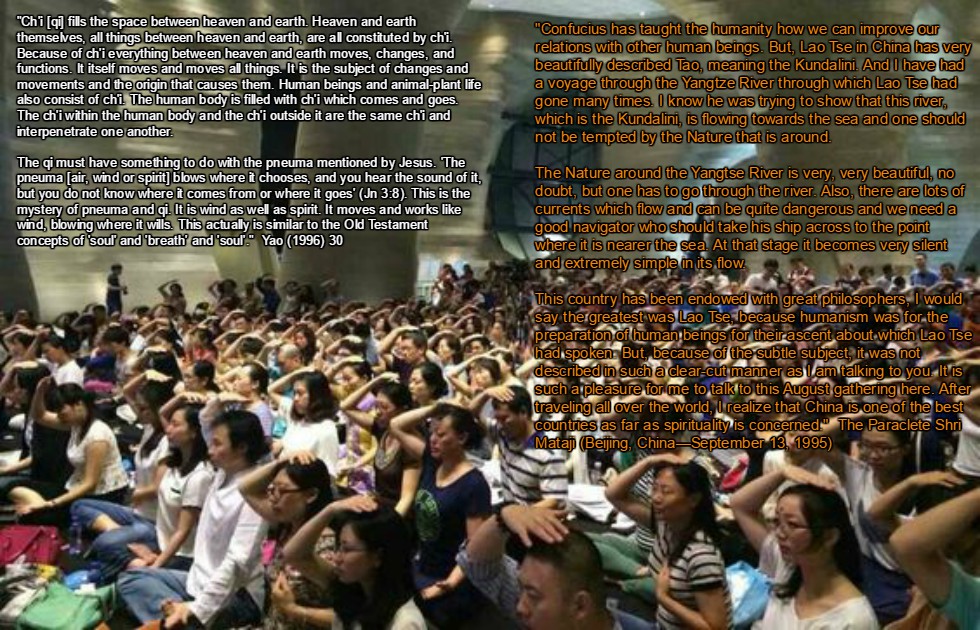
Clearly, what Jesus had in mind was much more than a dry recitation of biblical facts. He wanted them to proclaim a life-changing message-a message that would move His followers to live a life accordance with the imperatives He had entrusted to them.” (Fabarez 2005, 8)
THE MOTHER: Messiah-Paraclete-Ruh-Devi
Press Conference, 1999’London, UK

"You see, the Holy Ghost is THE MOTHER. When they say about the Holy Ghost, She is THE MOTHER... Now, the principle of MOTHER is in every, every scripture — has to be there. Now, THE MOTHER's character is that She is the one who is the Womb, She is the one who is the Mother Earth, and She is the one who nourishes you. She nourishes us. You know that. And this feminine thing in every human being resides as this Kundalini.”
THE MOTHER: Messiah-Paraclete-Ruh
Santa Cruz, USA—October 1, 1983
Question from audience: Is the Kundalini the same force that exists all around us as the Chinese call Chi?
Shri Mataji: “The Chinese what they have written, it's correct. But Chinese also don't know who is Lao-Tse, can you imagine? Lao-Tse is the man who talked about this thing; he's the one who told them about Kundalini and they don't know who is Lao-Tse. Especially in America, I don't know what sort of Chinese live here.
it's such a great source of knowledge, and what they have said is a perfect thing. But everything gets integrated in Sahaja Yoga. All the knowledge, all the scriptures, everything gets integrated. Absolutely integrated because out of light you see the truth in all of them. There is truth in everything, there is truth in every religion.
But religion now has become money-oriented, or also power-oriented, so it's gone off.
So the best thing is to get to the roots of it and find out. So many things are said to explain, according to times also, but how many people really know the roots of religion? They are all one, coming from the same tree, there’s nothing to fight. Have you ever seen one branch of the tree fighting with another? It’s as absurd as that, to me I can’t understand. It’s not possible. For us to fight with each other, for what are we fighting? We are part and parcel of one whole. How can we fight, it’s very unnatural, which is very dangerous also.
As I said, a tree, on a tree there are so many leaves and they are all different. You won’t find another leaf repeating itself. But they never fight with each other do they? Why should we, the human beings fight, in the name of God? They make money in the name of God. They fight in the name of God. They do all kinds of things in the name of God, now what do you say what sort of a God it is? How much we have brought glory to the name of God? All right?
So we have to know that innate religion within us, which is in everyone. All of us have that innate religion, we may call it by any name. It’s a pure, global religion we can call it. Which is within all of us, it’s a fact, I’m telling you a fact. Otherwise you start fighting for this, fighting for that, then what will happen?
That’s what I said this is the Last Judgment, and this Last Judgment is really going to make the difference between the people who have got self-realization and who haven’t got it. Last judgment we are not going to put on the balance to find out who is thinner and who is fatter, no.
It is what have you got within yourself. What light you have got within yourself and you must have proper understanding that your value of your human life is very great. It is not something frivolous, cheapish, it’s very great and you can help the whole world to emancipate. All right?”
The Paraclete Shri Mataji
Public Lecture, New York, USA—1999
Related Articles:
Taoism - Religion or Philosophy?
Tao, (Great Mother) is an entirely comfortable and universal idea
The Tao-te ching and Lao-tzu
Qi is a Chinese term that is translated as breath, vapour, and energy
Taoist concepts of the subtle body and centers
Apokalypsis: The fulfillment of eschatological instruction by the Paraclete in the Age to Come promised by Jesus at the Last Supper
An apocalypse (Greek: apokalypsis meaning “an uncovering”) is in religious contexts knowledge or revelation, a disclosure of something hidden, “a vision of heavenly secrets that can make sense of earthly realities.” (Ehrman 2014, 59)
“An apocalypse (Ancient Greek: apokalypsis ... literally meaning "an uncovering") is a disclosure or revelation of great knowledge. In religious and occult concepts, an apocalypse usually discloses something very important that was hidden or provides what Bart Ehrman has termed, "A vision of heavenly secrets that can make sense of earthly realities". Historically, the term has a heavy religious connotation as commonly seen in the prophetic revelations of eschatology obtained through dreams or spiritual visions.” Wikipedia 2021-01-09

Total number of recorded talks 3058: Public Programs 1178, Pujas 651, and other (private conversations) 1249
“The Paraclete will come (15:26; 16:7, 8, 13) as Jesus has come into the world (5:43; 16:28; 18:37)... The Paraclete will take the things of Christ (the things that are mine, ek tou emou) and declare them (16:14-15). Bishop Fison describes the humility of the Spirit, 'The true Holy Spirit of God does not advertise Herself: She effaces Herself and advertises Jesus.' ...
It is by the outgoing activity of the Spirit that the divine life communicates itself in and to the creation. The Spirit is God-in-relations. The Paraclete is the divine self-expression which will be and abide with you, and be in you (14:16-17). The Spirit's work is described in terms of utterance: teach you, didasko (14:26), remind you, hypomimnesko (14:26), testify, martyro (15:26), prove wrong, elencho (16:8), guide into truth, hodego (16:13), speak, laleo (16:13, twice), declare, anangello (16:13, 14, 15). The johannine terms describe verbal actions which intend a response in others who will receive (lambano), see (theoreo), or know (ginosko) the Spirit. Such speech-terms link the Spirit with the divine Word. The Spirit's initiatives imply God's personal engagement with humanity. The Spirit comes to be with others; the teaching Spirit implies a community of learners; forgetful persons need a prompter to remind them; one testifies expecting heed to be paid; one speaks and declares in order to be heard. The articulate Spirit is the correlative of the listening, Spirit-informed community.
The final Paraclete passage closes with a threefold repetition of the verb she will declare (anangello), 16:13-15. The Spirit will declare the things that are to come (v.13), and she will declare what is Christ's (vv. 14, 15). The things of Christ are a message that must be heralded...
The intention of the Spirit of truth is the restoration of an alienated, deceived humanity... The teaching role of the Paraclete tends to be remembered as a major emphasis of the Farewell Discourses, yet only 14:26 says She will teach you all things. (Teaching is, however, implied when 16:13-15 says that the Spirit will guide you into all truth, and will speak and declare.) Franz Mussner remarks that the word used in 14:26, didaskein, "means literally 'teach, instruct,' but in John it nearly always means to reveal.” (Stevick 2011, 292-7)
The Holy Spirit as feminine: Early Christian testimonies and their interpretation,
Johannes van Oort, Radboud University, Nijmegen, The Netherlands
Department of Church History and Church Polity, Faculty of Theology, University of Pretoria, South Africa
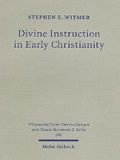
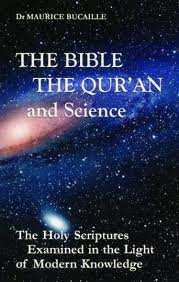
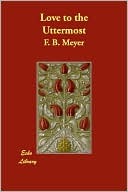
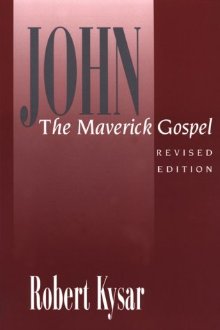
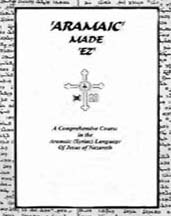
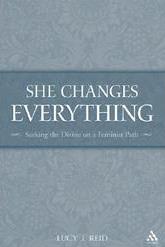
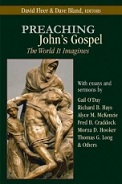

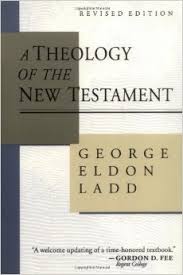
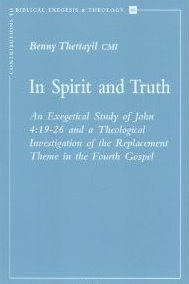


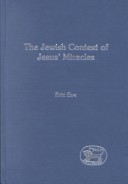
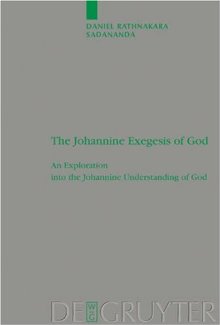
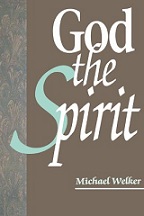
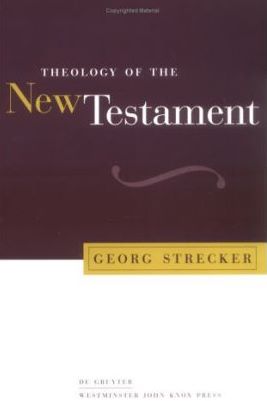
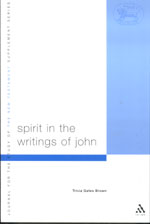
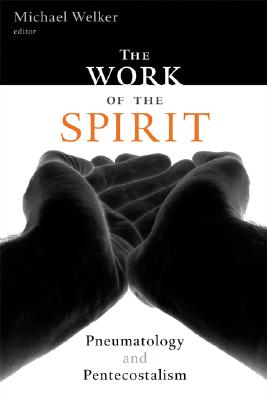
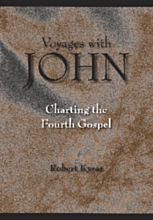


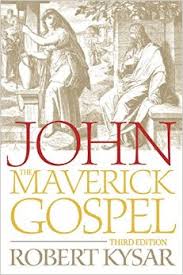
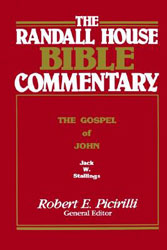
 “The teaching of the Paraclete, as the continuation of Jesus' teaching, must also be understood as the fulfillment of the promise of eschatological divine instruction.”
“The teaching of the Paraclete, as the continuation of Jesus' teaching, must also be understood as the fulfillment of the promise of eschatological divine instruction.”Stephen E. Witmer, Divine instruction in Early Christianity
“Jesus therefore predicts that God will later send a human being to Earth to take up the role defined by John .i.e. to be a prophet who hears God's words and repeats his message to man.”
M. Bucaille, The Bible, the Qur'n, and Science
“And when Jesus foreannounced another Comforter, He must have intended a Person as distinct and helpful as He had been.”
F. B. Meyer, Love to the Utmost
“The Paraclete has a twofold function: to communicate Christ to believers and, to put the world on trial.”
Robert Kysar, John The Meverick Gospel
“But She—the Spirit, the Paraclete...—will teach you everything.”
Danny Mahar, Aramaic Made EZ)
“Grammatical nonsense but evidence of the theological desire to defeminize the Divine.”
Lucy Reid, She Changes Everything
“The functions of the Paraclete spelled out in verses 13-15... are all acts of open and bold speaking in the highest degree.”
David Fleer, Preaching John's Gospel
“The reaction of the world to the Paraclete will be much the same as the world's reaction was to Jesus.”
Berard L. Marthaler, The Creed: The Apostolic Faith in Contemporary Theology
Bultmann calls the “coming of the Redeemer an 'eschatological event,' 'the turning-point of the ages.”
G. Ladd, A Theology of the New Testament
“The Paraclete equated with the Holy Spirit, is the only mediator of the word of the exalted Christ.”
Benny Thettayil, In Spirit and Truth
“The divine Paraclete, and no lessor agency, must show the world how wrong it was about him who was in the right.”
Daniel B. Stevick , Jesus and His Own: A Commentary on John 13-17
Stephen Smalley asserts that “The Spirit-Paraclete ... in John's Gospel is understood as personal, indeed, as a person.”
Marianne Thompson, The God of the Gospel of John
“The Messiah will come and the great age of salvation will dawn (for the pious).”
Eric Eve, The Jewish context of Jesus' Miracles
“The remembrance is to relive and re-enact the Christ event, to bring about new eschatological decision in time and space.”
Daniel Rathnakara Sadananda, The Johannine Exegesis of God
“The Spirit acts in such an international situation as the revealer of 'judgment' on the powers that rule the world.”
Michael Welker, God the Spirit
The Paraclete's “Appearance means that sin, righteousness, and judgment will be revealed.”
Georg Strecker, Theology of the New Testament
“While the Spirit-Paraclete is the true broker, the brokers they rely on are impostors.”
T. G. Brown, Spirit in the writings of John
“The pneumatological activity ... of the Paraclete ... may most helpfully be considered in terms of the salvific working of the hidden Spirit.”
Michael Welker, The work of the Spirit
“The pneuma is the peculiar power by which the word becomes the words of eternal life.”
Robert Kysar, Voyages with John
“The gift of peace, therefore, is intimately associated with the gift of the Spirit-Paraclete.”
Francis J. Moloney, The Gospel of John
“This utopian hope, even when modestly expressed, links Jesus and the prophets to a much wider history of human longing.”
Harvey Cox, The Future of Faith
“Because of the presence of the Paraclete in the life of the believer, the blessings of the end-times—the eschaton—are already present.”
Robert Kysar, John
“They are going, by the Holy Spirit's power, to be part of the greatest miracle of all, bringing men to salvation.”
R. Picirilli, The Randall House Bible Commentary
“The Kingdom of God stands as a comprehensive term for all that the messianic salvation included... is something to be sought here and now (Mt. 6:33) and to be received as children receive a gift (Mk. 10:15 = Lk. 18:16-17).”
G. Ladd, A Theology of the New Testament
Disclaimer: Our material may be copied, printed and distributed by referring to this site. This site also contains copyrighted material the use of which has not always been specifically authorized by the copyright owner. We are making such material available to our readers under the education and research provisions of "fair use" in an effort to advance freedom of inquiry for a better understanding of religious, spiritual and inter-faith issues. The material on this site is distributed without profit. If you wish to use copyrighted material for purposes other than “fair use” you must request permission from the copyright owner.